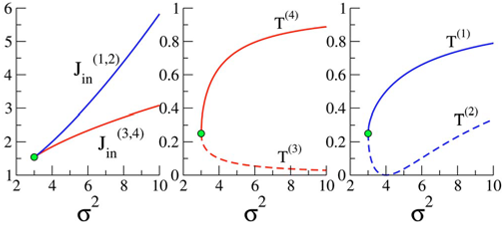




Did you find this useful? Give us your feedback

















2,520 citations
829 citations
...Note however, that complications arise for d = 2, 3 due to additional symmetry points in the dispersion relation of the linear problem [278]....
[...]
193 citations
120 citations
78 citations
1,691 citations
...1(a)....
[...]
...Practical applications of such PhC devices are becoming a reality due to the recent experimental success in realizing both linear and nonlinear light transmission in two-dimensional PhC slab structures where a lattice of cylindrical pores is etched into a planar waveguide....
[...]
1,361 citations
271 citations
259 citations
...Finally, we show that employing such enhancements is of paramount importance for the design of all-optical devices based on slow-light photonic crystal waveguides....
[...]
The possibility of such enhancement is a direct consequence of the discreteness of the photonic crystal waveguide and is in a sharp contrast to similar resonant systems based on ridge waveguides. The authors study light propagation in the plane of periodicity, assuming that the rods have a radius r=0. As a matter of fact, their studies indicate that sufficiently accurate results can be obtained already for L 4a /s. In Fig. 12 the authors plot the dispersion relation for a 2D model photonic-crystal waveguide and compare it with exact numerical results calculated by the supercell plane-wave method 47. First, the authors explore the former possibility.
If the authors neglect nonlinear effects assuming that either the waveguide cavities are linear, n3 =0, or the light intensity in the waveguide remains sufficiently small , Eq. 21 reduces toDw An = j=1 Vjw An+j +
The resonant frequency of the polymer-rod resonator lies very close to the edge k= ± /s of the waveguide passing band, and can be tuned by changing the linear dielectric constant of the rod.046603-9
The possibility of such enhancement is a direct consequence of the discreteness of the photonic crystal waveguide and is in a sharp contrast to similar resonant systems based on ridge waveguides.
As the authors see, the nonlinear sensitivity of the resonator at the site n is a product of its nonlinear feedback parameter, n, the sensitivity to a change of the dielectric constant, n, and the Kerr susceptibility of material, n3 .
The authors believe that the basic concept of the geometric enhancement of nonlinear effects based on the discrete nature of photonic-crystal waveguides will be useful in the study of more complicated devices and circuits and, in particular, for various slow-light applications.
the authors have demonstrated that while the transmission coefficient vanishes at both spectral edges for the on-site coupled structure see Fig. 1 b , light transmission remains perfect at one band edge for the inter-site coupled structure see Fig. 1 c .
this enhancement of light scattering at the waveguide band edges should be very important from the point of view of fabrication tolerances since virtually any imperfection contributes to scattering losses.
The authors have presented a detailed analysis of PhC waveguides side coupled to Kerr-nonlinear resonators which may serve as a basic element of active photonic-crystal circuitry.
the authors can expect that for inter-site coupled structure nonlinear ef-fects at the band edge k= ± /s should be sufficiently strong to allow bistable transmission and switching.
a nonlocality of the intercoupling between waveguide cavities as well as a nonlocality of cross coupling with the resonator lead to a small shift in the resonance frequency, res, but do not change the main result about the suppression of the detuning and transmission T at both edges of the waveguide passing band.
Below the authors show that the assumption of linear waveguide cavities may be relaxed for frequencies near the resonator resonance frequency because then the amplitudes
Furthermore,Vn,m = m Wn c 2 dr dr E n* r ̂n rm r Ĝ r + R n − R m,r E m r , 22is the dimensionless linear coupling between the nth and the mth cavity.
In contrast, the light intensity at the resonator reaches its maximum value at ,A 2 4 V1wV0, 2 sin2 k s Iin vgrs w wV0, 2 Iin2Q V ,0 2Iin, 34which may significantly exceed the incoming light intensity Iin when the coupling V0, between the resonator and waveguide becomes small enough relative to the coupling V1w between the cavities in the waveguide.
In addition, the authors would like to emphasize that the engineering of the geometry of photonic-crystal-based devices such as that presented in Fig. 1 c becomes extremely useful for developing concepts of all-optical switching in the slow-light regime of PhC waveguides which may have much wider applications in nanophotonics and is currently under active experimental research 40 .